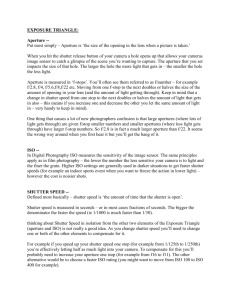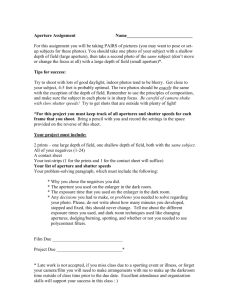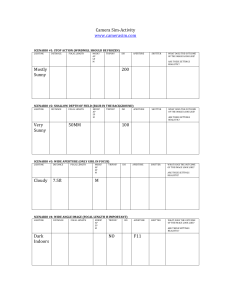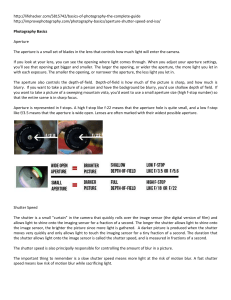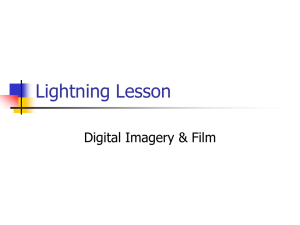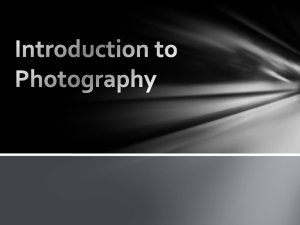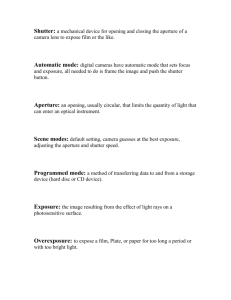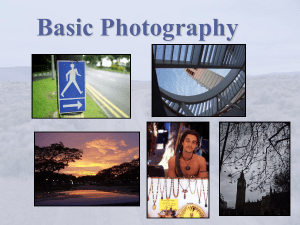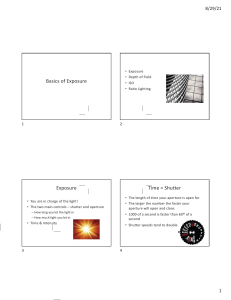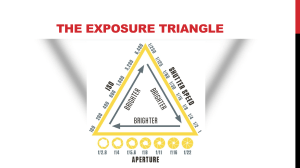Photo Editing Overview
advertisement
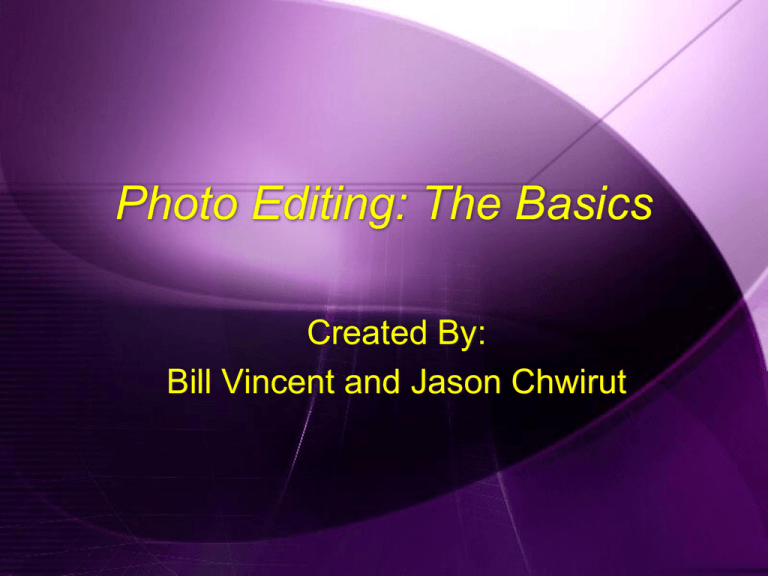
Photo Editing: The Basics Created By: Bill Vincent and Jason Chwirut Why are you here? We are going to show you: Step #1: How to take a good picture Step #2: How to enhance and edit digital images Step #3: How to package those images Step #1: How to take a good picture Three settings we need to be familiar with: Aperture Shutter Speed ISO Aperture The aperture is the size of the opening in the camera lens at the moment the photo is taken. Shutter Speed Shutter speed is the amount of time the shutter remains open when a photo is taken. 1/100 1/30 1/1000 ISO “International Organization for Standardization” is a unit of measurement, measuring the sensitivity of film. The larger the number, the more sensitive the film. 100 ISO 3200 ISO Now hold it right there while I get my camera! If your settings are incorrect… this is what can happen: Which cannot be edited! Camera settings in the dental clinic/operatories? Aperture: 4.0 - 5.6 f-stop Shutter speed: 1/60 or higher ISO: 600 ISO Step #2: How to enhance and edit digital images Sharpness Brightness Please take a couple minutes to fill out the matching handout…Good luck Review Time !!! Photo Editing - Hands on Open browser Go to: http://intranet.sdm.buffalo.edu/academic services/DMC/tutorials.htm Sample images are available for experimentation Step #3: Packaging File Types: JPEG TIFF GIF PNG BMP Pros vs. Cons Let’s see how the file types differ in size…. Let’s experiment…. Take a picture of the screen using the print screen key on the keyboard. Import the screen into Microsoft Picture Manager, then save in a variety of file formats. Record the results. File Format File Size Thank you !!! Any Questions?
